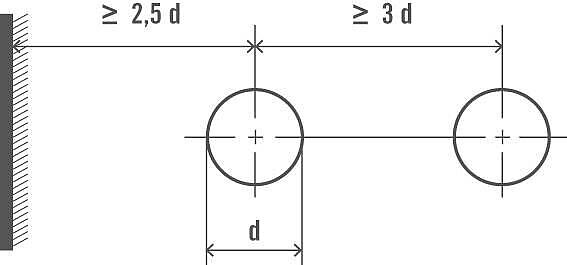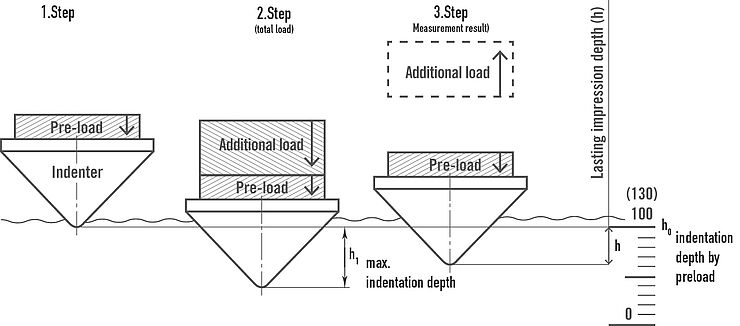
In the Rockwell hardness test, a differential-depth method, the residual depth of the indent made by the indenter, is measured. In contrast, the size of the indentation is measured in the Brinell, Vickers and Knoop optical test methods.
The deeper a defined indenter penetrates the surface of a specimen with a specified test load, the softer the material that is being tested. The Rockwell hardness (HR) is then determined from the residual indentation depth, along with a few other factors (see below).
In hardness testing according to Rockwell, the total test force is applied in two steps. This is intended to eliminate effects from the roughness of the specimen surface (e.g., grooves on the specimen) as well as measurement errors caused by the play of the indentation depth measurement.


The Rockwell method offers the following advantages:
The Rockwell method has the following disadvantages:
To achieve as broad an application range as possible for the Rockwell test, several methods were developed for both the Rockwell and the Super Rockwell processes.
The resulting Rockwell methods use five different indenters (diamond cone with 120 degree curvature or a hard metal ball made of tungsten carbide with diameters: 1/16", 1/8", 1/4", 1/2") and six different total test forces (15, 30, 45, 60, 100, 150 kgf).
This results in 30 different Rockwell scales standardized according to ISO 6508 and ASTM E18 (e.g., A, B, C, 30N, 15T) or Rockwell test methods (e.g.: HRA, HRBW, HRC, HR30N, HR15TW), each covering different hardness ranges and consequently the widest variety of materials and applications (see table below).
Rockwell is often used as a quick test in production or in the laboratory, as well as for other processes, such as the Jominy end quench test / Jominy test.
The most common Rockwell method in practice is HRC. In principle, ball indenters are used for the hardness tests on softer materials and diamond indenters for testing harder materials. The diamond would destroy softer materials or pierce through them.